9.4 Contact Points And JointsA system is built by connecting components together. These connections can be rigid or moving. In solid connections all forces and moments are transmitted and the two pieces act as a single rigid body. In moving connections there is at least one degree of freedom. If we limit this to translation only, there are up to three degrees of freedom, x, y and z. In any direction there is a degree of freedom, a force or moment cannot be transmitted. When constructing FBDs for a system we must break all of the components into individual rigid bodies. Where the mechanism has been broken the contact forces must be added to both of the separated pieces. Consider the example in Figure 9.35 FBDs for systems with connected members. At joint A the forces are written as two components in the x and y directions. For joint B the force components with equal magnitudes but opposite directions are added to both FBDs. 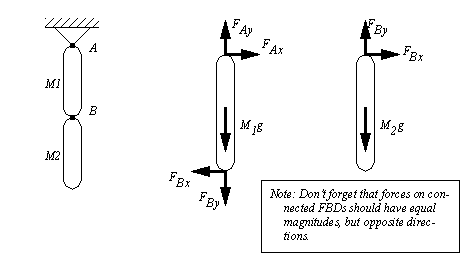
9.4.1 Switching- system components turned on/off - cables in tension/compression - show an example where input conditions change 
- give PWM (Pulse Width Modulation) example with ripple showing equivalent voltage. PWM is used to generate analog voltage equivalents. Show for a system with first order response with tau = 0.1s for a frequency of 1KHz, 10Hz and 1Hz. Point out the ripple and effective voltage. 9.4.2 Deadband- costs money to reduce friction, so it is better to compensate in software - small actuation signals not large enough to overcome friction - This effect is normally known as ’stiction’, a combination of the words static and friction. - Friction is common in less expensive motors, and when a motor is driving a mechanical system. - In systems there are two type of friction that must be considered. - The static friction, ’stiction’, will prevent initial motion. If the systems breaks free and starts turning, the kinetic friction will provide a roughly constant friction resistance. - relationship in figure below. - the region where the applied voltage has no effect is called the deadband. 
- deadband compensation as shown in figure below. 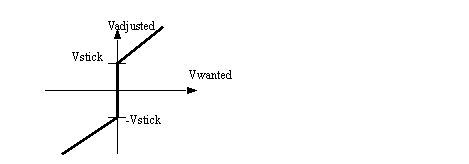
- equations for these are shown in figure 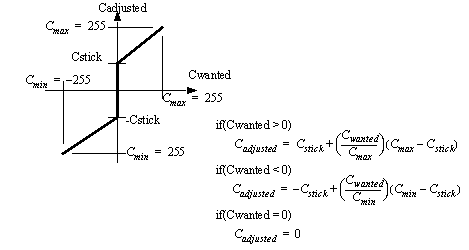
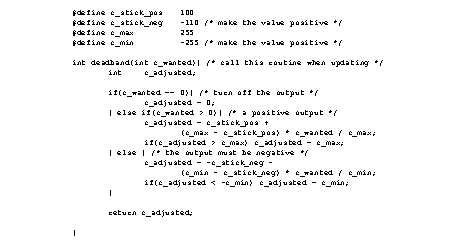
9.4.3 Saturation and Clipping• Some devices have natural maximum values, such as voltage or pressure limitations caused by a regulated supply. 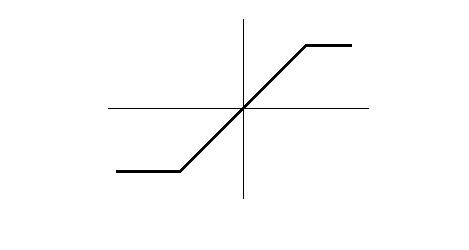
9.4.4 Hysteresis and Slip- windup resulting from springiness and friction 
- correct by tracking the previous motion direction and taking extra steps when reversing direction 9.4.5 Delays and Lags• Time delays are common in systems • In the simplest form this is a period of time between when an event occurs and when the effect occurs. • If an output delay is larger than the control system step time it may be necessary to predict future states and initiate outputs ahead of those. • If an input delay is larger than the control system it might be necessary to slow the control action, or build it into the control law. |